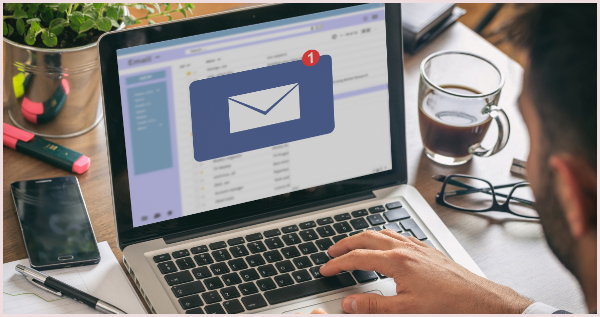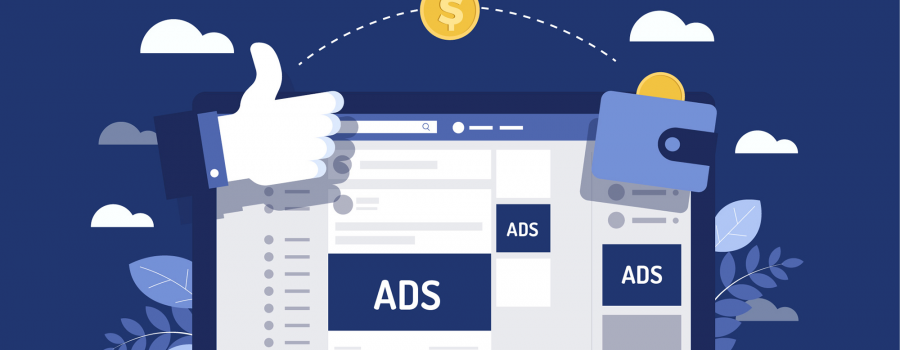How to Start Email Marketing for eCommerce

It is no secret that email marketing is still one of the best ways to engage your customers, boost those sales, and create a loyal customer base.
Now, we know that crafting a killer email marketing plan can feel overwhelming, especially if you are new to the game.
That is why we will guide you through this process.
We will show you the ropes on how to build your email list. Give you ideas for creating captivating campaigns. Help you achieve the results you are after. And all this without drowning you in confusing jargon or complicated techniques.
So keep reading!
Define Your Email Marketing Goals
Email marketing can be a tricky business. Without clear goals, you just might be shooting in the dark and not getting the results you want.
But what exactly are email marketing goals?
In a nutshell, they are specific objectives designed to help you achieve desired outcomes through email marketing.
A clear understanding of these goals can steer the development of an effective email marketing strategy. Goals let you reverse-engineer the steps needed to achieve them.
When defining your email marketing goals, start by getting a handle on your business objectives.
What are the big goals your company or marketing department aims to meet?
Are you looking to increase sales, drive more website traffic, boost customer engagement, or perhaps build brand awareness?
Once you get those business objectives locked in, it is time to align your email marketing goals with them.
For example, if your objective is to increase sales, your email marketing goal could be all about improving the conversion rates or getting those average order values to skyrocket through your email campaigns.
There is a whole array of other goals worth considering as well.
Here are a few options to jumpstart your brainstorming:
- Increasing the number of subscribers
- Boosting open rates
- Improving click-through rates
- Reducing cart abandonments
- Encouraging repeat purchases
- Building customer loyalty
- Minimizing unsubscribes
But setting goals isn't enough—you need to make them SMART.
This acronym stands for Specific, Measurable, Achievable, Relevant, and Time-bound.
Source: Flashy
In other words, your goals should be crystal clear, trackable, within reach, aligned with your business objectives, and have a specific timeframe for achievement.
Once you set your goals, don't leave them hanging in the wind.
Regularly evaluate and adjust your email marketing strategy.
Keep a keen eye on your email marketing performance and measure it against your goals.
This way, you will know exactly where to make those tweaks to stay on track toward your desired outcomes.
Create Buyer Personas of Your Subscribers
When it comes to understanding your audience, creating buyer personas helps immensely.
These fictional profiles of your subscribers can unlock insights about who they truly are, what excites them, and what they really want.
By unlocking these insights, you can better customize your email marketing strategy and align it with their preferences and desires. We’ll get to that a bit later.
Now, let's explore some practical ideas for gathering data about your target audience.
It all starts with taking a close look at your existing customer support data, website analytics, and email marketing metrics.
These sources are packed with information that can reveal patterns, trends, and common traits among your audience.
For example, you can get a ton of useful information just by looking at the data from your email marketing software.
Source: Flashy
Also, don't be shy about reaching out to your subscribers directly through surveys, feedback forms, or interviews.
They are the ones who can give you some priceless firsthand knowledge.
Next, consider different categories that will help you paint a broader picture of your target audience:
- Demographic information: Age, gender, income, and education can reveal a lot about your audience's preferences and needs.
- Psychographic insights: Interests, hobbies, values, attitudes, and lifestyle choices can shed some light on what really resonates with your subscribers.
- Geographic information: Knowing where your subscribers reside can help you tailor your content to their specific location-based needs.
- Pain points and challenges: Identify the hurdles your subscribers grapple with that your products or services can tackle.
These data points will become the building blocks for creating your buyer personas that represent your target audience.
Now, let's bring these personas to life.
Give each persona a name, a detailed description, and even a visual representation to make them relatable and memorable. The final result might look like in the picture below.
Source: Flashy
This personal touch humanizes your target audience and allows you to create tailored email marketing content, offers, and messaging that speak directly to your persona's interests and desires.
Keep in mind, though, that buyer personas shouldn't be set in stone. The world is constantly changing, and so are your subscribers.
Continually revise and update your personas to keep up with changes in your subscriber base.
This way, you will ensure that your email marketing efforts remain relevant and effective.
Invest in the Right Email Marketing Platform
Investing in the right platform can make all the difference in your email marketing efforts.
It makes no sense to do things the “old school” way, send emails from Gmail or some basic tool that is not tailored for eCommerce. You’d be missing out on so many useful features.
Picture the right platform as the engine that powers your email campaigns, equipping you with all the necessary tools and features to create, send, and manage your emails while tracking and analyzing their performance.
For example, as an eCommerce store owner, you understand the importance of keeping your customers engaged throughout their entire purchasing journey.
That is where an email marketing platform, such as our own tool, Flashy, steps in to enhance your approach.
For example, Flashy goes beyond the basics of email marketing by monitoring your shoppers' entire journey.
Source: Flashy
You can uncover valuable insights about their previous purchases, products they viewed, items in their cart, their preferred product categories, and more.
Armed with this knowledge, you can then create and automate email campaigns that are not only relevant but also highly personalized to their interests.
Moreover, with Flashy, you can create pop-up messages to attract subscribers, collect leads, and reduce cart abandonment.
For instance, the tool can detect when visitors are browsing your eCommerce store and prompt them to sign up for your newsletter in order to get a discount.
Source: Flashy
Once they subscribe and become a part of your email list, Flashy takes charge and automatically sends them a welcome newsletter and a series of other engaging emails.
When it comes to all-in-one automation tools, these platforms usually come equipped with user-friendly editors for creating emails.
The drag-and-drop feature enables you to create beautifully designed newsletters in a few clicks.
Source: Flashy
You also have a variety of layouts and templates at your disposal that will streamline the whole process of creating emails.
More importantly, Flashy also enables you to track email metrics and measure the effectiveness of your email campaigns. You can track the ROI and see if your approach is working well or it needs some adjustments.
And the best part? You can access all these features and benefits with just one tool.
Therefore, investing in a powerful email platform for your eCommerce business is a wise choice.
It can be crucial in enhancing your sales and improving your marketing efforts.
Start Building Your Email List
Once equipped with the right software, you’re ready to start grabbing those emails.
Building an email list is a critical step in your eCommerce marketing strategy. However, convincing people to hand over their email addresses can be challenging.
So, where do you even begin?
First things first, you should make signing up easy for your audience.
Add opt-in forms to your website in visible and accessible locations, like your homepage, prominent menu bar, pop-ups, or sticky bars.
Take a cue from Casper, the mattress company. They strategically placed their opt-in form in the footer with a catchy copy that says, "Sign up for the latest snooze."
Source: Casper
That kind of call-to-action instantly entices potential subscribers to join their email list.
But don't overwhelm your website visitors by asking for too much information. Stick to the essentials—their name and email address.
Next, to amp up your chances of collecting email addresses, you need an irresistible lead magnet to offer your potential subscribers.
Think of something that would make them eager to sign up.
It could be a discount code, free shipping, an ebook, a checklist, or a template.
For instance, if your eCommerce operates in a highly competitive niche such as selling tennis shoes, why not offer a discount upon subscribing?
Just like in the example from New Balance below.
Source: New Balance
By giving something valuable upfront, you will have potential subscribers chomping at the bit to join your email list.
With opt-in forms and lead magnets good to go, it is time to spread the word and drive traffic to the sign-up page.
This is where your existing social media channels can come in handy.
Get creative and craft eye-catching posts that highlight the benefits of joining your email list. For example, eCommerce brands can easily grow their email list by arranging a contest or a giveaway.
Just make sure the rule to enter it is to provide their email address, instead of, say, just following and liking your page. Check the example from a kitchenware brand below.
Source: legendsouthafrica on Facebook
To sum up, while building an email list may demand your time and effort, the rewards make it all worthwhile.
Segment Your Email Subscribers
Email segmentation might sound like a complex concept, but it is actually a game-changer for your email marketing strategy.
So, what is it exactly?
In essence, it involves dividing your email recipients into smaller, targeted groups and then sending them information that is specifically relevant to them.
By doing this, you are making sure that your audience is getting emails and offers that truly interest them.
In fact, studies show that email marketing campaigns with segmentation perform better.
Illustration: Flashy / Data from WordStream
They boast higher open rates, which means that more people are engaging with your emails.
When it comes to segmenting your customers, there are various criteria you can use. You can, for instance, consider the following factors:
- Demographics
- Location
- Interests
- Consumer habits
- Purchasing history
Take Audible as an example. They send emails about new book releases to users who added those books to their wishlist.
Source: Zapier
Before you jump into segmentation, though, it is essential to collect data about your customers.
This allows you to create customer profiles and divide them into audience segments later on.
If you have advanced marketing automation software, this data can even be collected automatically for you.
Check out the example of a customer profile below from our own platform—it includes biographical data and even information on their interests and actions taken, such as how they interacted with the emails and behaved on the eCommerce store.
Source: Flashy
Once you have this valuable data, you can adapt your emails to the specific traits and habits of your subscribers.
For instance, you can target customers who left items in their cart and offer them personalized reminders or discounts to seal the deal.
Source: Flashy
The bottom line is that email segmentation allows you to target your customers with highly relevant messaging.
This significantly increases the chances of your audience responding to your emails and taking action.
And we all know that increased action means higher conversions, resulting in more sales for your eCommerce business.
Create Automated Email Drip Sequences
After segmenting your email list the next step is to send them different emails tailored to their specific interests and actions.
That is where automated email drip sequences come in.
Drip sequences are a series of carefully crafted emails that are automatically sent to subscribers.
Instead of just sending a single one-size-fits-all email to your entire audience, a drip sequence takes a strategic approach by delivering targeted messages at the right time.
The key to a successful drip sequence lies in triggers—events or actions that initiate the automated email drip sequence.
For example, triggers can include someone joining your email list, making a purchase, abandoning a cart, visiting a website, or opening an email.
Source: Flashy
These triggers serve as the starting point for your drip sequence, ensuring that your emails are not only highly relevant but also perfectly timed.
But let's show this with an example of new subscribers to make the whole concept more understandable.
When someone joins your mailing list, this action will trigger a welcome email sequence.
This sequence helps you greet the new subscribers, offer them a discount for their first order, and introduce them to your company.
Check out this welcome mail example from One Kings Lane, a home decor and furniture store.
Source: Private inbox / One King Lane
This email does a few things well: it grabs the attention with a promo code, introduces the new subscriber to the brand, and even offers a glimpse into top categories and best-selling products.
It is an enticing way to encourage exploration and make use of that promo code.
In subsequent emails within the sequence, you can continue to introduce your brand value, showcase your products, nurture relationships, and educate your audience.
The same approach can be applied to different stages of your customer's journey, such as onboarding, renewals, unsubscribes, recommendations, nurturing leads, and more.
Just try not to overdo it—bombarding your subscribers with too many emails will only annoy them.
Instead, focus on a moderate set of drip emails that will remind them about your products and sales, teach them how to use your service, and keep new subscribers in the loop.
Track the Right Email Marketing Metrics
Finding the perfect strategy for your email marketing efforts can be a bit of a challenge.
It takes time and experimentation to discover what works best for your eCommerce, including testing different email formats, subject lines and copy, and optimal send times.
In other words, you need to monitor the performance of your campaigns using metrics.
When it comes to metrics that email marketers usually track, there are a few that stand out such as the open rate, click-through rate (CTR), unsubscribe rate, bounce rate, and conversion rate.
Source: Litmus
Let's now see what each of these metrics represents and why they matter.
The open rate is the most frequently used metric in email marketing because it’s the first step. It measures the percentage of recipients who open your emails. A high open rate indicates that your subject lines are enticing enough to grab your audience's attention.
If no one opens your emails, you can’t hope for any conversions and revenue, right? So it makes sense to track this metric, and optimize things to improve it.
The CTR gauges the percentage of recipients who clicked on a link in your email. A high CTR implies that your email content and calls-to-action are compelling and effectively driving recipients to take action.
The conversion rate is another important metric to track. It measures the percentage of recipients who completed a desired action from your email, such as ordering a product or visiting your website.
Tracking these metrics may seem overwhelming, but if you are using email marketing software, you can easily monitor them.
For instance, in Flashy's report, you can easily see the open rate and CTR numbers, while also tracking sales and revenue.
Source: Flashy
These insights allow you to understand the impact and effectiveness of your email campaigns.
Apart from these basic metrics, there are other important metrics worth considering for more accurate data.
Bounce rates constitute one such example.
Tracking bounce rates can provide insights into your email deliverability. Bounces occur when emails are rejected by an email server.
Source: Flashy
By subtracting the bounces from the number of delivered emails, you can gain a clearer picture of your deliverability.
Lastly, there is the unsubscribe rate. While it is natural to lose some subscribers over time, a high unsubscribe rate should raise a red flag. It indicates that your email content or frequency may not be meeting the recipients' expectations.
Keep in mind that there is no universal formula that fits all of your email marketing campaigns. The key is to continuously analyze and optimize your email marketing efforts.
By doing so, you can create the best way forward for your eCommerce store.
Conclusion
There you have it. You now have all the ingredients you need to launch a successful email marketing strategy for your eCommerce business.
But remember, email marketing isn't a one-and-done deal. It is a constant process of fine-tuning and refining your strategy.
So keep experimenting, analyzing, and learning from any missteps along the way. Just like any skill, practice makes perfect.
Increase Sales Today
No Credit Card Required. Pre-built Strategy.




